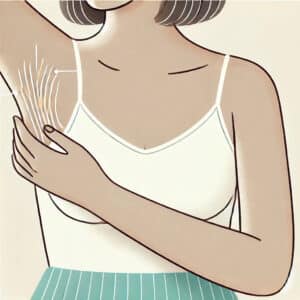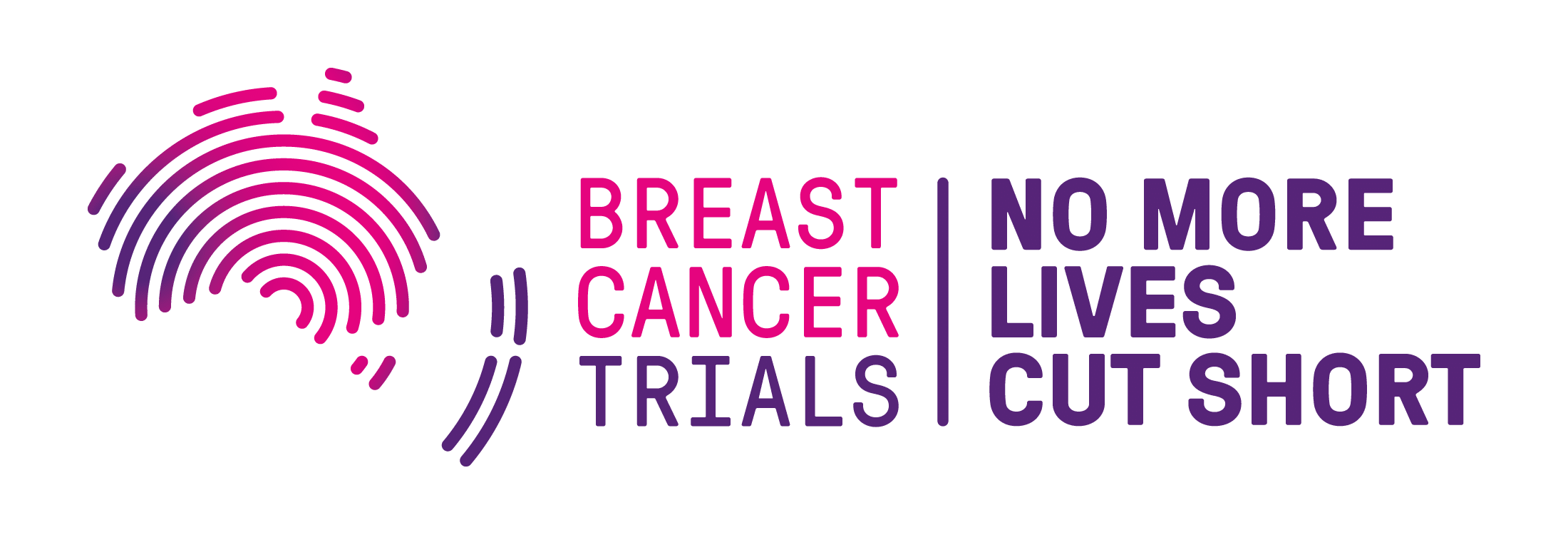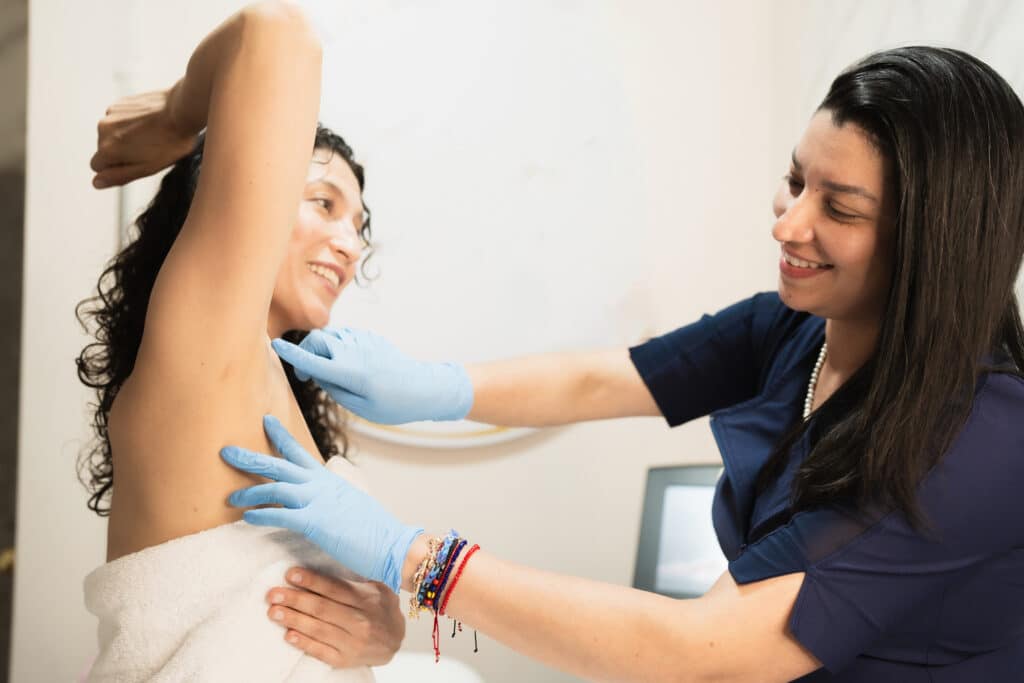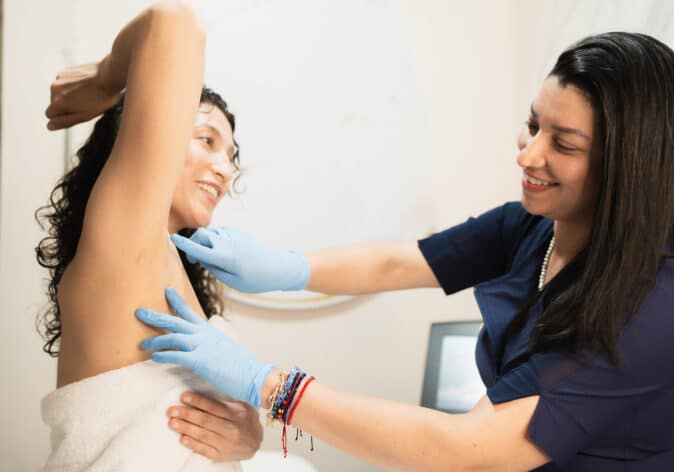Breast Cancer Trials is dedicated to improving the lives of those affected by breast cancer. Through research and education, we help people better manage side effects and improve recovery. One such side effect that can occur after breast cancer surgery is cording.
Cording (also known as axillary web syndrome) can be an unexpected part of recovery, but with the right care, it can be managed effectively. Here’s what you need to know about breast cancer cording.
What is cording in breast cancer?
Cording, also known as axillary web syndrome, is a condition that can develop after breast cancer surgery, especially following lymph node removal or mastectomy. It’s characterised by the formation of tight, rope-like bands of tissue under the skin, most commonly around the underarm area.

Is cording, a sign of breast cancer? The answer is no, cording after breast cancer surgery is a typical side effect and is not an indication that the cancer has returned. It occurs due to disruption of the lymphatic system during surgery, which can cause the formation of these tight tissue bands.
Importantly, cording can appear anywhere from a few weeks to several months after surgery. While it can be uncomfortable, the good news is that cording is usually temporary. Its duration can vary, but with the right treatment and care, it is manageable and can improve significantly.
How painful is cording?
The pain associated with cording can vary depending on its severity. For some individuals, it may feel like mild tightness, while others may experience sharper pain, especially when attempting to move their arm or shoulder.
Cording can also impact your range of motion, making everyday activities such as dressing, lifting objects, or reaching overhead more difficult.
An important consideration is the link between cording and lymphoedema, which causes swelling in the arm, hand, or chest. While cording and lymphoedema share some overlapping symptoms, they are distinct conditions. Cording involves the tightening of tissue, often forming rope-like bands under the skin, while lymphoedema typically presents as swelling or a feeling of heaviness in the affected areas.
Despite their differences, both conditions can affect the arm and shoulder, leading to discomfort, restricted movement, and reduced mobility. It’s also possible for someone with cording to develop lymphedema at the same time, as both can result from disruption in the lymphatic system during surgery.
If you notice symptoms like swelling, a sensation of heaviness, or any other unusual changes along with cording, it’s important to speak to your doctor. They can help you determine if the symptoms are related to lymphedema and suggest the best course of treatment.
How do you get rid of cording?
The good news is that cording after breast cancer surgery can often be treated effectively with a combination of therapies. The key to improving mobility and reducing pain is to keep your joints and tissues mobile. Early rehabilitation and movement therapy are critical in breaking down the tight bands of tissue and helping to restore full range of motion to the affected arm.
Here are a few tips to help alleviate cording:
- Movement: Regular movement of the arms and shoulders is essential to keep muscles and tissues flexible, reducing the tightness associated with cording.
- Stretching exercises and physiotherapy: These play an important role in loosening the tissue and easing the discomfort. A physiotherapist can guide you through the best exercises for cording after breast cancer surgery to relieve tightness and improve flexibility.
- Massage therapy: Specialised techniques can help break down the tight bands of tissue and relieve the discomfort associated with cording.
In most cases, cording rarely returns once it’s properly treated. However, if you notice that the cording persists or worsens despite these efforts, it’s important to consult a healthcare provider for a more tailored treatment plan.
Should you be concerned about breast cancer recurrence?
It’s important to understand that cording after breast cancer surgery is not a sign of breast cancer recurrence. While cording can be uncomfortable and may cause concern, it is typically a temporary condition related to the surgical process, not a sign that the cancer has returned.
That said, regular screenings and follow-up check-ups are essential to monitor your recovery and ensure any potential issues are detected early. If you notice any unusual changes in your body or if you have concerns, don’t hesitate to reach out to your healthcare team.
For further support on managing fears related to breast cancer recurrence, you can read our blog: Easing the fear of breast cancer recurrence.
Breast Cancer Trials’ role in advancing breast cancer research and treatment
Breast Cancer Trials is at the forefront of advancing breast cancer research and improving the well-being of individuals affected by breast cancer. Breast Cancer Trials conduct clinical trials to test new and more effective treatments for managing the side effects of breast cancer treatment, as well as enhancing overall recovery.
If you’re interested in learning more about clinical trials, explore our current open trials.
To support our ongoing efforts, we encourage you to donate to support breast cancer research.
FAQs about breast cancer related cording
What are the early signs of cording?
One of the early signs of underarm cording breast cancer patients may experience is the appearance of visible or palpable tight cords under the skin, typically in the underarm. These cords may appear as one thick band or as several smaller, tighter bands running along the skin. In some cases, the cords can be felt as you move your arm or even when gently pressed on.
As well as the visual signs, you may experience some discomfort or a pulling sensation, especially when raising your arm or reaching. Cording can limit your arms range of motion and make everyday tasks like dressing or lifting objects more challenging.
If you notice any of these early signs, it’s important to consult a healthcare professional to help manage and treat cording early on.
How do you get rid of cording?
The most common ways to treat cording is through physiotherapy, specialised massage techniques, and stretching exercises. If you’re unsure about what’s best for you, it’s always a good idea to consult with a healthcare professional.
Does cording (axillary web syndrome) mean I have cancer?
No, cording does not mean that you have cancer. It’s a common side effect of breast cancer surgery, especially after lymph node removal, and is not a sign of cancer returning.
What is lymphatic drainage therapy after breast cancer?
Lymphatic drainage is a type of massage therapy designed to improve the flow of lymph fluid, reduce swelling, and manage conditions like lymphedema. It’s especially useful for people who have had breast cancer surgery or lymph node removal.
What are the symptoms of lymphoedema in breast cancer patients?
Symptoms of lymphoedema include swelling in the arm, chest, or hand, as well as feelings of heaviness, tightness, or aching. Early intervention and treatment can help prevent complications such as infections.
Can you experience cording without breast cancer?
Yes, although cording is mostly associated with breast cancer surgery, it can also happen in people without breast cancer. This can occur due to other surgeries, infections, or trauma to the lymphatic system.
If you’re dealing with cording after breast cancer, don’t hesitate to seek out support, whether that’s through physiotherapy, massage, or other treatments.
Support Us
Help us to change lives through breast cancer clinical trials research



